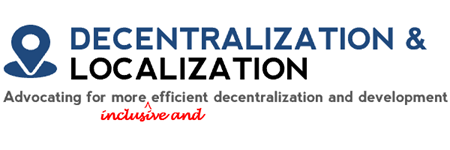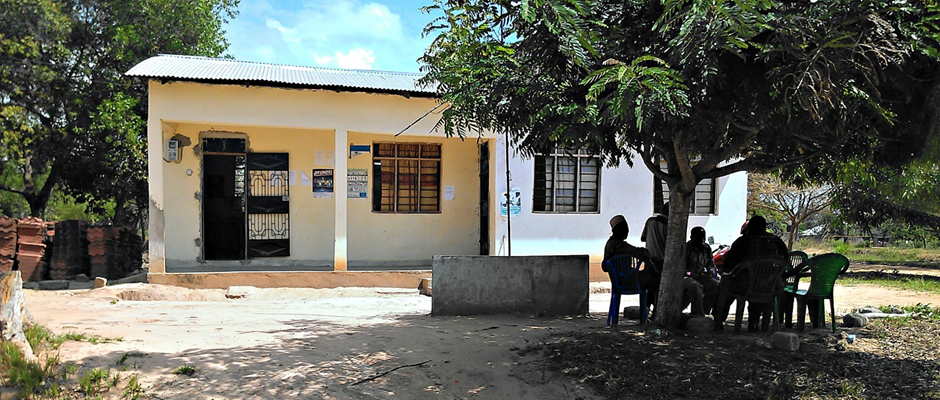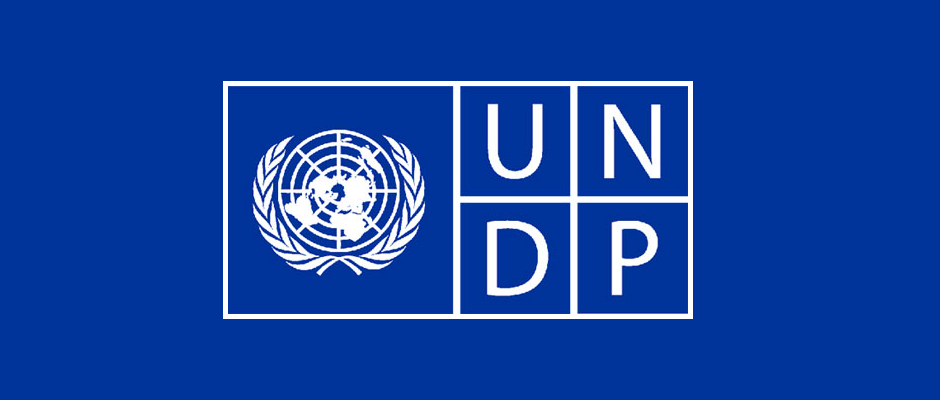
As the reality sets in that the United States and European countries are drastically reducing their support to developing countries, there is a recognition that the end of the advanced economies’ generosity is not the end of ‘global development’.
The funding gap that is being left by the major decline in foreign assistance from the United States, United Kingdom and other Global North donors is unlikely to be filled by other development partners or funders. There is no indication that additional funding will come from other G7 countries, the European Union, or other high-income countries. Despite the vast amounts of wealth that philanthropists have at their disposal, even they will not be able to sustainably offset the declines in official development assistance.
Urgent conversations are taking place among governments, foundations, and global development organizations centered on a crucial question: Who will fill this gap? And how will it be filled?
Yet, many of the current conversations focus on activities and efforts that take place within the walls of international development organizations or in the halls of central government ministries. Not many of the emerging conversations recognize that public services are delivered –and sustainable development is actually achieved at the local level—in the cities, towns and rural communities where people live and work.
First: how big is the emerging development funding gap?
Before jumping to the million (or rather, billion) dollar questions—who will fill the gap? and how will the gap be filled?—it is important to determine how big the nascent development funding gap really is.
In order to get an idea of the order of magnitude being considered, the United States Government’s total foreign assistance budget—including economic and military assistance—for 2023 was appropriated and planned at US$ 45 billion. Recent cuts in development spending announced by the UK and other European countries range in the (single-digit) billions of dollars or below. As per the OECD (as tabulated by the World Bank), the total global official development assistance portfolio amounts to roughly US$ 150 billion per year.
This sounds like a lot of money, but everything is relative. While development assistance is typically only a tiny fraction of donor country GDP, the total amount of development assistance is even quite modest when expressed as a share of public sector spending in recipient countries. Based on OECD data, public sector (“general government”) spending around the world amounts to 36.5 trillion US dollars (at purchasing power parity) when aggregated across all countries (China and India excluded). As such, total ODA (US$ 150 billion) is only a tiny fraction (0.4 percent) of total public sector spending around the world.
Even when net donor regions (North America and Europe) are removed from the picture, general government spending in the remaining global regions still amounts to 11.5 trillion dollars. In aggregate, total ODA in the Global South equals only one percent of public sector spending. Even if all ODA were withdrawn, the amount of ODA that the hardest-hit region—Sub-Saharan Africa—would lose would equal 6 percent of total public sector spending in the region. That is a non-trivial amount, but not an insurmountable challenge.
So, who is going to fill the gap?
Realistically, there is only one development actor that can fill the nascent gap in international development assistance: governments in the Global South are going to have to rise to the occasion and make it happen themselves. The call to self-reliance has never been so real and so urgent!
Promoting the interests of their citizens—by providing public services and supporting inclusive economic development—is what governments should be all about. In fact, this is what governments are: governments are platforms for pursuing the collective interests of the people in their respective communities, regions, or nations, through collective decision-making and collective action.
As such, if public sectors in the Global South are able to find a few percentage points of fiscal space and are able to strengthen the performance of governments at the national, regional, and local levels (by transforming themselves—as needed—into governments “of the people, by the people, for the people”), they should be able to offset even the most catastrophic loss of development assistance. This will require governments to redouble efforts to grow their economies, to collect more public revenues (as needed), and perhaps most importantly—to make sure that government spending is efficiently directed towards their constituents’ highest priorities and decisively deal with corruption.
How to fill the gap?
The writing has been on the wall about the decline of development assistance for a while. For the past decade or so, increasing attention has been paid by different development actors to the fact that a path to sustainable development and self-reliance in the Global South would require countries—especially in Africa and Asia—to increase their tax collections, so as to offset future declines in global development assistance. Since few politicians or development agencies like to openly advocate for higher taxes, this process is often euphemistically referred to as domestic resource mobilization (DRM). Thus—so the argument goes—if governments in Africa can increase their public revenues by 6 percent, they can fill the financial gap that would be left by an end to global development assistance.
What has not received adequate attention in the development community over (at least) the past decade is the fact that governments in the Global South tend to spend a large share of their own public resources on things that are not necessarily the highest priority to the people at the grassroots. In fact, one of the reasons why many taxpayers in the Global South are loathe to pay taxes—not unlike their counterparts in the Global North—is because their governments are (perceived to be) highly inefficient, spending on things that don’t matter to the people.
Para-phrasing former Kenyan President Uhuru Kenyatta, raising taxes and spending these resources on “guns and bullets” (or other things people don’t care about) lowers the value-for-money that is provided by the government and lowers trust in government.
Since the introduction of Kenya’s 2010 Constitution, Kenya’s 47 County Governments are responsible for most public services that impact people’s everyday lives. In practice, however, the national government collects and retains most high-yielding revenues: while counties receive about 15 percent of the revenue pie (largely through ‘equitable sharing’ of national revenues), close to 85 percent of revenues are retained by the national government, with few services to show for. In June 2024, riots ensued when Kenyatta’s successor—President William Ruto—tried to increase taxes rather than reduce national government spending.
The path to sustainable development finance is just as much (if not more) about responsive and efficient public spending as it is about taxation
An alternative development strategy would focus less on revenues and more on spending: if Global South governments can eliminate (and redirect) the most inefficient 6 percent of their budget spending, they will similarly have gained the necessary fiscal space to provide funding for the highest-value spending programs. After all, a penny saved is a penny earned.
Although the argument seems to have recently been highjacked by populists in Global North, basic economic theory suggests that an extra dollar (shilling, rupee, or dinar) that is raised from taxpayers but then wasted or spent on something other than on the priorities of the people would result in a net welfare loss. Domestic revenue mobilization will thus only result in a net welfare gain (and sustainable development) if public sector resources are spent in an efficient and responsive manner.
In order to achieve an “efficient and responsive public sector” governments have to spend most of their available public resources efficiently on the public services that people care about. This is true in the Global North and Global South alike. As a basis for evidence-based policy making, this means that:
- Public resources shouldn’t get stuck at the central government level to fund politicians’ excessive salaries or on an army of central bureaucrats that add little to frontline services. Instead, most public resources should be used to fund public services at the local or grassroots level where services are actually delivered;
- Public resources should be distributed efficiently and equitably across the national territory for frontline services that are important and visible to the people, rather than getting spent on public services near the capital (or other locations favored by national politicians); and
- Once public resources arrive at the local level, these financial flows (e.g., funding for wages) should be transformed from inputs (e.g., teachers in the classroom) to outputs (e.g., children receiving public education), and outcomes or development results (e.g., increased literacy and labor productivity). This entails making the local government system work. Localized funding is no good if teachers and health workers are regularly absent from their posts in the absence of effective accountability mechanisms.
The basic principles of an effective and responsive multilevel public sector are more or less clear; much is yet to be learnt about how to put theory into practice.
There is pretty convincing evidence to suggest that greater “decentralization” or “localization” of public sector resources consistently results in better outcomes (e.g., Mansuri and Rao 2013; Boex and Edwards 2014). While there is no one-size-fits-all solution to making decentralization work, the basic principles of an effective and responsive multilevel public sector are more or less clear.
Yet, much is yet to be learnt about how to put theory into practice. It takes time, expertise, and money, to track the extent to which countries allocate their public resources to regional and local governments (or other local actors) for the delivery of frontline services, and to make sure that public resources are being used optimally in a results-based manner. This is an area of development policy that has received far too little attention over the past 25 years.
To the extent that subnational fiscal data are available, it appears that plenty of resources get stuck at the national/central government level, where resources are often spent in ways that do not create a direct benefit for a country’s citizens. For instance, in the MENA region, more than 90 percent of public spending is directly done by central governments, with less than 10 percent trickling down to local governments. In Sub-Saharan Africa, the subnational percentage appears to be somewhat higher at 27 percent, although the regional average plummets to 6 percent when Ethiopia, Nigeria and South Africa are excluded. If 90 percent or more of public resources never reaches the cities, towns, and villages where people live and work, it is quite unlikely that greater domestic revenue mobilization will result in better public services and sustainable development.
Similarly, when disaggregated fiscal data is analyzed (again, in countries where—and to the extent that—such data are available), it turns out that subnational spending is rarely allocated in an evidence-informed manner. As a result, public sector funding often fails to reach the places where resources are needed the most, resulting in poor services and popular discontent. Although the importance of public expenditure tracking studies was recognized in the early 2000s as an effective tool to improve accountability in public finance and service delivery, the analysis of subnational finances has largely been marginalized since then. Few countries (or development actors) systematically study whether public expenditures are distributed efficiently and equitably across to national territory, and whether these resources are efficiently transformed into results. Even fewer countries appear to use such information to make public policy decisions about resource allocations.
Why aren’t governments spending on the priorities of their people?
Government spending priorities in the Global South are influenced by a variety of factors, including economic constraints (such as accumulating debt repayment) and external pressures. Ultimately, however, public sector resources flow to where they are directed by national political and bureaucratic elites. So, why would a national politician set his own salary at 40 times what an average constituent earns? Why would a powerful Member of Parliament lobby to have resources spent in his own constituency rather than in a constituency that has greater needs, but is represented by an opposition member? Why would a principal secretary or director of a central ministry prefer to be in charge of a $100 million infrastructure project, as opposed to passing these resources along to 100 local governments where the money can be put to good use for frontline services or shovel-ready projects? Why would a public servant rather work in a central ministry office than in a frontline service delivery facility? With an eye on the next election, why would a mayor set local water tariffs below the level needed for full cost-recovery? The answer to all these questions is the same.
It’s the (political) economy, … .
Professionals working in foundations or in sectors such as health or water may prefer to pretend that their job is strictly technical and “not political”. In fact, some of the existing challenges in (multilevel) public sector management are technical in nature and require evidence-informed policy reform: for instance, targeted policy analysis can inform the policy debate by showing where public sector funding is going, and where it is getting stuck. Such analysis should include analyses of vertical allocation of resources, horizontal (territorial) allocation of resources, and spatially disaggregated analysis of spending efficiency.
But the simple truth is that in most countries, political economy forces tend to draw attention and resources away from efforts to promote sustainable development (and/or the people’s priorities). Although the extent and the exact nature of state resource capture—whether by political elites, bureaucrats, or economic elites—tends to vary from country to country, the overall centralizing pattern is remarkably consistent. As such, targeted political economy analyses can help identify political and institutional roadblocks to much-needed public sector reform.
While technical experts can contribute technical analyses and political economy assessments, one thing that cannot be supplied externally is political will. Ultimately, it is those in power who have to decide to use public resources in a citizen-centric, results-oriented and accountable manner. This often requires ceding authority and responsibility for the delivery of public services and control over public resources to subnational officials. As a result, decentralization or multilevel governance reforms tend to happen only when central government officials are convinced—typically by a broad consensus of societal stakeholders—that they are better off having indirect power over a growing economic pie rather than having more direct power over small or shrinking one.
Where from here?
In the 1990s, in the aftermath of the fall of the Berlin Wall, the collapse of the Soviet Union, the end of apartheid in South Africa, and the Asian economic crisis, it was widely recognized that empowering people over their public sector was a critical pathway to inclusive governance and sustainable development. The effort of the global development community in this decade resulted in a major social and economic transformation in Central and Eastern Europe and selected other countries (including the Philippines, Indonesia, and South Africa), along with more gradual public sector transformation in Latin America.
Over the past 25 years, however, this critical realization has been overtaken by the urgencies of war and by more marketable development objectives. This resulted in a development ecosystem where—especially in Africa and Asia—it was quicker and easier to give away fish (or vaccines) rather than to convince—and support—the fisherman to mend his (or her) nets and to help ensure that fish were distributed in an efficient and equitable manner.
As global development assistance will likely continue to decline in the coming years, the dwindling development resources are best directed towards strengthening public sector systems. With no more Global North fish to give away, the urgent need for effective Global South fishing nets is quickly coming into focus. How effective these nets will be, and whether or not the fish caught with these nets are distributed in an efficient and equitable manner, will almost certainly depend on whether country-level policy dialogues and consensus building efforts are able to overcome political-economy headwinds.
While each country is unique, the experiences and lessons from countries that have made progress in the past quarter century in pursuit of a more inclusive and efficient multilevel public sector can serve as proof that reform is possible and serve as a catalyst for such country-level policy debates and policy reforms. For now, at least, there is still a core group of global policy makers, scholars, and practitioners around the world focused on decentralization, localized development, and multilevel governance that collectively hold a wealth of experience and knowledge on how to move countries towards a more inclusive, responsive and efficient public sector.
This blog was written by Jamie Boex, Augustine Magolowondo, and Jacqueline Muthura. It was published on Decentralization.Net on March 18, 2025. Jamie Boex is the Executive Director of the Local Public Sector Alliance (LPSA). Augustine Magolowondo is co-chair of LPSA’s Thematic Working Group on Local Democracy and Inclusive Governance. Jacqueline Muthura is an LPSA Project Manager, Working Group Coordinator, and co-chair of LPSA’s Thematic Working Group on Gender Equity and Women’s Empowerment.






